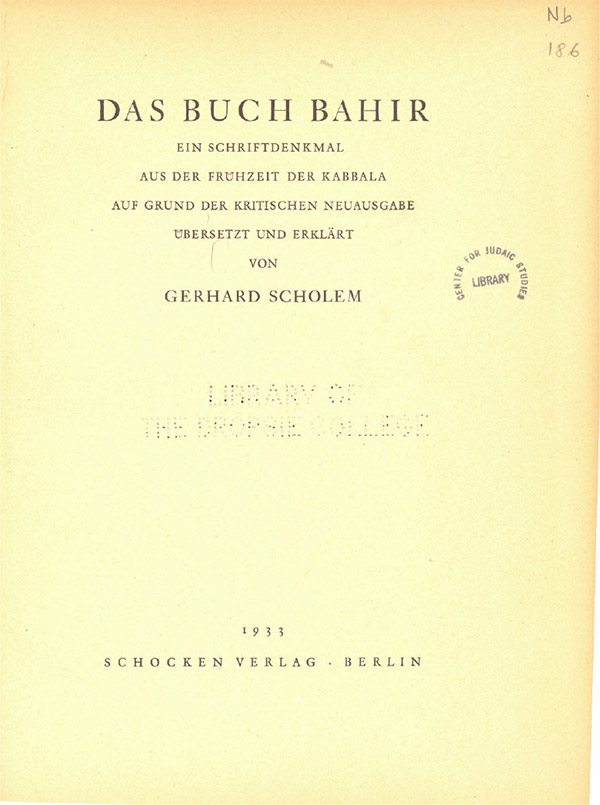The image shown here reproduces the title page of the 1933 edition of Gershom Scholem's translation of and commentary on Sefer Ha-Bahir
Which exhibit?
Page: Featured item
Short name for this entry
Gershom Scholem
Order on exhibit page
11
Turn off the details link on the exhibit page
Off
